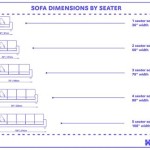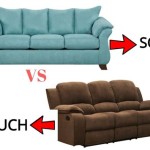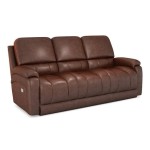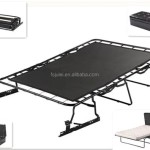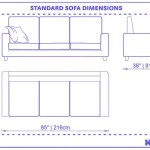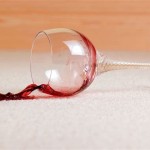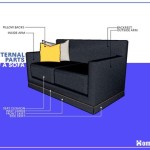Replacing Leather Sofa Cushions: A Comprehensive Guide
Leather sofas, prized for their durability, aesthetic appeal, and comfort, represent a significant investment in home furnishings. Over time, however, the cushions of these sofas can experience wear and tear, leading to a decline in both appearance and comfort. Replacing leather sofa cushions can revitalize a beloved piece of furniture, extending its lifespan and restoring its original elegance. This article provides a comprehensive guide to understanding the process of replacing leather sofa cushions, covering key considerations, material options, and the steps involved in achieving a successful outcome.
The deterioration of sofa cushions manifests in several ways. Common issues include sagging, flattening, tearing, staining, and fading. Sagging and flattening occur as the internal filling material compresses and loses its resilience. Tears and stains are often the result of accidents or accumulated wear. Fading, particularly in areas exposed to direct sunlight, detracts from the overall visual appeal of the sofa.
Replacing the cushions offers a cost-effective alternative to replacing the entire sofa. It allows homeowners to maintain the frame, which may still be structurally sound, while addressing the specific areas that have deteriorated. Furthermore, it provides an opportunity to customize the look and feel of the sofa by selecting different leather types, colors, and filling materials. Selecting the right replacement cushions is crucial. This involves evaluating the existing cushion dimensions, leather quality, and desired comfort level.
Understanding the Need for Replacement
Several factors contribute to the need for replacing leather sofa cushions. Understanding these factors is crucial for determining the appropriate timing and scope of the replacement process.
Wear and Tear: Daily use inevitably leads to wear and tear. Sitting, leaning, and even simply being exposed to the environment contribute to the breakdown of the leather and the compression of the internal filling. High-traffic areas of the cushions, such as the seating areas, tend to show signs of wear more quickly. Furthermore, the seams and stitching are susceptible to damage over time, particularly if they are subjected to excessive stress.
Damage: Accidents happen. Spills, stains, and scratches can significantly impact the appearance of leather sofa cushions. While some stains can be treated with specialized leather cleaners, others may be irreparable, necessitating replacement. Scratches, particularly deep ones, can weaken the leather and make it more prone to tearing. Pet damage, such as claw marks or chewing, is another common reason for cushion replacement.
Comfort Degradation: The internal filling of sofa cushions plays a critical role in providing comfort and support. Over time, this filling can compress, flatten, or break down, resulting in a loss of cushioning and a decrease in overall comfort. Sagging cushions not only look unappealing but also provide inadequate support, potentially leading to discomfort or even back pain. Replacing the filling or the entire cushion can restore the original comfort level.
Aesthetic Concerns: Even without significant damage or comfort issues, homeowners may choose to replace leather sofa cushions for aesthetic reasons. Faded leather, outdated colors, or a desire for a different style can all prompt a cushion replacement project. Replacing the cushions provides an opportunity to update the look of the sofa and refresh the entire living space.
Key Considerations Before Replacement
Before embarking on the replacement process, several key considerations must be addressed. These considerations will guide the selection of appropriate materials, ensure a proper fit, and ultimately contribute to a successful outcome.
Measurements: Accurate measurements are essential for ensuring that the new cushions fit properly within the sofa frame. Measure the length, width, and thickness of the existing cushions with precision. It is important to account for any variations in size between different cushions. If the existing cushions are unusually shaped or feature intricate details, consider creating templates to ensure an accurate fit. If possible, carefully remove the old cushions, measure their dimensions precisely and note these measurements by writing them down or taking photographs so that they can be accurately referenced when ordering new cushions.
Leather Type and Quality: Leather varies significantly in terms of quality, durability, and appearance. Full-grain leather is considered the highest quality, known for its natural beauty and durability. Top-grain leather is slightly less expensive and still offers good durability. Genuine leather is a lower grade option, and it may peel or crack with time. Bonded leather is the least expensive option, but is made of scraps and is not suitable for replacement sofa cushions. Consider the existing leather type of the sofa and choose a replacement option that complements it. Consider the color and texture to ensure a cohesive look.
Filling Material: The filling material determines the comfort level and support provided by the cushions. Options include foam, down, feathers, and fiberfill. Foam provides firm support and is relatively inexpensive. Down is soft and luxurious but may require more maintenance. Feathers offer a balance of comfort and support. Fiberfill is a synthetic material that is hypoallergenic and relatively durable. Choosing the right filling material depends on personal preferences and desired comfort level.
Budget: The cost of replacing leather sofa cushions can vary widely depending on the size of the cushions, the quality of the leather, the type of filling material, and whether the cushions are custom-made or purchased pre-made. Establish a budget before starting the replacement process to avoid overspending. Obtaining quotes from multiple suppliers or upholstery shops can help in making informed decisions.
The Replacement Process: A Step-by-Step Guide
The process of replacing leather sofa cushions typically involves several key steps. Understanding these steps can help ensure a smooth and successful replacement.
Sourcing Replacement Cushions: Replacement cushions can be sourced from various sources, including online retailers, upholstery shops, and furniture stores. Online retailers offer a wide selection of pre-made cushions in various sizes and styles. Upholstery shops can create custom-made cushions to exact specifications. Furniture stores may offer replacement cushions for their own sofa models. When sourcing replacement cushions, consider the reputation and reliability of the supplier. Check customer reviews and ask for samples of the leather and filling material. If possible, visit a physical store to inspect the cushions in person before making a purchase.
Installation: Once the replacement cushions have been acquired, installation is usually straightforward, especially if ordering premade cushions. Simply placing the new cushions on the sofa frame may be all that is required. Custom cushions may need to be installed by a professional upholsterer or require adjustment before being ready for use. However, if a custom cushion has been ordered and has a zipper, consider removing the interior filling. This will make the installation process easier.
Maintenance: Once the new cushions are in place, proper maintenance is essential for preserving their appearance and extending their lifespan. Regular cleaning with a leather cleaner is recommended. Avoid exposing the cushions to direct sunlight, which can cause fading and cracking. Protect the cushions from spills and stains. Consider using a leather conditioner to keep the leather supple and prevent drying.
Replacing leather sofa cushions is a worthwhile investment that can revitalize a beloved piece of furniture and enhance the comfort and aesthetics of the living space. By carefully considering the factors outlined in this guide, homeowners can make informed decisions and achieve a successful replacement that extends the life of their leather sofa for years to come.

Leather Upholstery Furniture Sofa Chairs Couches Ottomans Replace And Recover New Restuffing Sagging Broken Down Foam

Leather Upholstery Furniture Sofa Chairs Couches Ottomans Replace And Recover New Restuffing Sagging Broken Down Foam

The Expected Lifespan Of A Foam Cushion Is Primarily Dependent On Density And Thickness Cushions Sofa Replacement Couch

Replacement Chesterfield Cushions The Leather Surgeons

Safefoam Leather Cushion Cover Foam Replacement

Sofa Cushion Replacement

Renovation Of Chesterfield Cushions By A1 Furniture

Replacement Leather Sofa Cushions

Leather Sofa Restuffing Services Advanced Upholstery

Leather Furniture Repair Couch Chair Restoration

